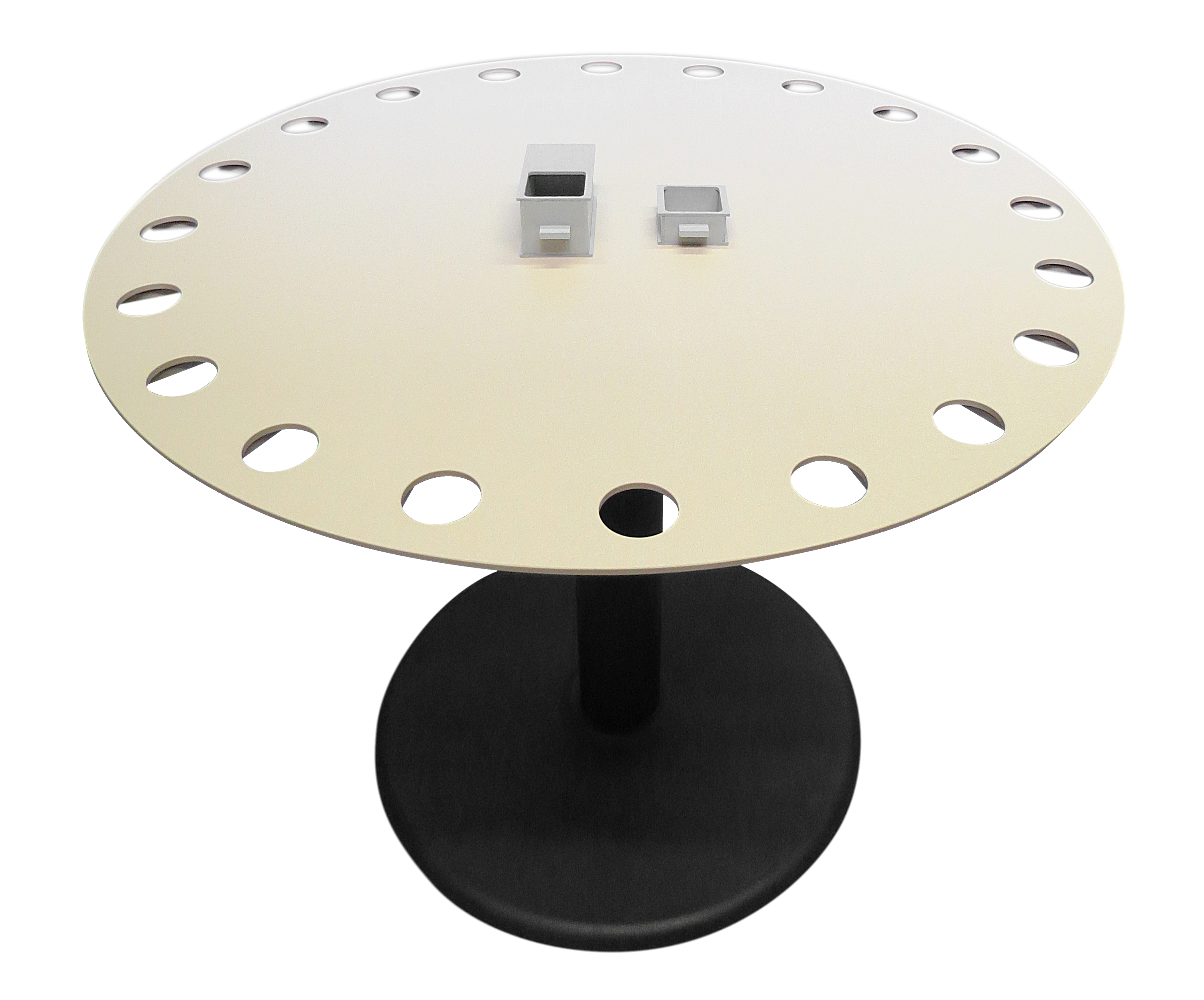The Barnes Maze consists of a circular table that has holes around the circumference. This is then put in a room that has visual cues around the outside. Most of the holes lead to an open drop down to the floor, however, one of the drops leads to an escape box.
Escape boxes are small, dark boxes in which animals can hide. This appeals to the nature of rodents which are motivated to avoid open spaces and bright lights, therefore will always attempt to find the escape box.
How does the Barnes Maze Test Work?
As rodents desire to avoid open spaces and bright lights, they will be motivated to find the escape box. Initially, the scientist will gently lead the animal to the escape box but in subsequent trials, the animal will be placed in the center of the table and must find the escape box on its own.

Benefits of the Barnes Maze Test
The Barnes Maze test is considered to be minimally stressful to the animal, the animals are able to learn the escape box’s location without the stress of swimming or food deprivation.
The Barnes Maze test is ideal for testing spatial learning and memory and as well as understanding the learning curve of the animal across consecutive trials, the searching strategy of the animal is interesting too. Some animals randomly search for the right hole, however, others systematically check each hole in particular patterns. When an animal moves directly to the correct hole despite its starting position, it means that spatial memory has formed.
Barnes Maze Test from San Diego Instruments
San Diego Instruments has carefully designed its maze to be simple to use, as well as easy to clean and transport. It has a range of color options and can be adjusted to suit a variety of experiments, compatible with ANY-Maze video tracking. The maze is available in both mouse and rat models, including 20 exploration holes, 20 false escape boxes and one escape box.
If you would like to find out more about our Barnes Maze Test, contact us today to speak to our team of experts,